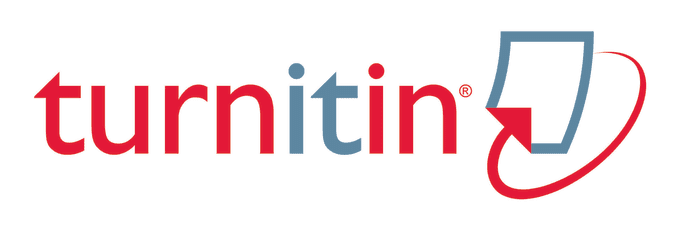Young Generation Perceptions of Marriage: Analyzing the #MarryIsScary Hashtag on TikTok
DOI:
https://doi.org/10.37535/101011220244Keywords:
hashtag, tiktok, marryisscary, perception, contentAbstract
This study explores how the TikTok hashtag #MarryIsScary influences young people’s negative perceptions of marriage. As social media shapes public discourse, this research examines the role of TikTok in amplifying marriage-related anxieties. Using a qualitative digital ethnographic approach, this study analyzed 100 videos and 1,000 comments associated with #MarryIsScary to assess dominant narratives and user engagement. Findings indicate that 68% of videos portray marriage negatively, citing fears of commitment, financial burden, and emotional instability. Additionally, 60% of comments reinforce these concerns, reflecting a growing skepticism toward marriage, especially among women aged 18-30 years. TikTok’s algorithm further amplifies these views, fostering an echo chamber effect. The platform serves as both a public discourse space and a reinforcement mechanism for shifting social values. Young users actively engage in discussions that challenge traditional marital expectations, revealing evolving attitudes toward relationships and long-term commitments. To counterbalance negative marriage narratives, a creative educational approach is needed. Engaging, positive content can provide a more realistic perspective on marriage, supporting informed decision-making among young users.
References
Ausat, A. M. A. (2023). The Role of Social Media in Shaping Public Opinion and Its Influence on Economic Decisions. Technology and Society Perspectives (TACIT), 1(1), 35–44. https://doi.org/10.61100/tacit.v1i1.37
Bell, R. L., & Oquendo, S. Y. (2024). The War of the Sexes Glossary: How Social Media Could Destroy American Marriage. Journal of Business Diversity, 24(1). https://doi.org/10.33423/jbd.v24i1.6989
Blumer, H. (2009). Symbolic interactionism: Perspective and method (1. paperback print., renewed). Univ. of California Press.
Chung, L. M. Y. (2022). The Power of Hashtags in Online Presentation Promotes Interactivity and Globalization in Students’ Learning. Journal of Educational Technology Systems, 50(4), 488–502. https://doi.org/10.1177/00472395221087613
Elvianti, E., & Wibowo, A. (2022). KONTEKS KOMUNIKASI NETIZEN DI MEDIA SOSIAL: Studi Netnografi Komunikasi terhadap Perilaku Bermedia Netizen di Akun Instagram Jokowi. KOMUNIKASIA: Journal of Islamic Communication and Broadcasting, 1(2), 82–96. https://doi.org/10.32923/kpi.v1i2.2120
Gesmundo, M. A. G., Jordan, M. D. S., Meridor, W. H. D., Muyot, D. V., Castano, M. C. N., & Bandojo, A. J. P. (2022). TikTok as a Platform for Marketing Campaigns: The effect of Brand Awareness and Brand Recall on the Purchase Intentions of Millennials. Journal of Business and Management Studies, 4(2), 343–361. https://doi.org/10.32996/jbms.2022.4.2.27
Gill Branston and Roy Stafford. (2003). The Media Student’s Book. Routledge.
Hasny, F. A., Renadia, S. H., & Irwansyah, I. (2021). Eksplorasi Konsep Diri para Pengguna TikTok dalam Memenuhi Social Needs pada Uses and Gratification Theory. JURNAL LENSA MUTIARA KOMUNIKASI, 5(2), 114–127. https://doi.org/10.51544/jlmk.v5i2.1671
Knox, R. (n.d.). PHD IN MARRIAGE AND FAMILY THERAPY.
Kozinets, R. V. (2015). Netnography: Redefined (2nd edition). Sage.
Madhani, L. M., Bella Sari, I. N., & Shaleh, M. N. I. (2021). DAMPAK PENGGUNAAN MEDIA SOSIAL TIKTOK TERHADAP PERILAKU ISLAMI MAHASISWA DI YOGYAKARTA. At-Thullab : Jurnal Mahasiswa Studi Islam, 3(1), 627–647. https://doi.org/10.20885/tullab.vol3.iss1.art7
Marini, L., Yurliani, R., & Kemala Nasution, I. (2022). Ekspektasi Peran Pernikahan Pada Generasi Z Ditinjau dari Jenis Kelamin, Usia, Agama dan Suku. ANALITIKA, 14(1), 89–98. https://doi.org/10.31289/analitika.v14i1.5145
Nasrullah, R. (2018). Etnografi virtual: Riset komunikasi, budaya, dan sosioteknologi di internet. Simbiosa Rekatama Media.
Nasrullah, R., & Gustini, D. R. (2022). Digital Speech Acts on Social Media: The Content Ethnographic of Audiences Response to the Publication of Illegal Online Loans on @Ojkindonesia’s Instagram Account. Jurnal Komunikasi Ikatan Sarjana Komunikasi Indonesia, 7(2), 450–459. https://doi.org/10.25008/jkiski.v7i2.755
Permadi, D. P. (2023). Tantangan Dakwah Digital: Perspektif Herbert Marcuse. Academic Journal of Da’wa and Communication, 4(1), 95–112. https://doi.org/10.22515/ajdc.v4i1.5519
Rauschnabel, P. A., Sheldon, P., & Herzfeldt, E. (2019). What motivates users to hashtag on social media? Psychology & Marketing, 36(5), 473–488. https://doi.org/10.1002/mar.21191
Rheingold, H. (2000). The Virtual Community: Homesteading on the Electronic Frontier. The MIT Press. https://doi.org/10.7551/mitpress/7105.001.0001
Saurwein, F., & Spencer-Smith, C. (2021a). Automated Trouble: The Role of Algorithmic Selection in Harms on Social Media Platforms. Media and Communication, 9(4), 222–233. https://doi.org/10.17645/mac.v9i4.4062
Saurwein, F., & Spencer-Smith, C. (2021b). Automated Trouble: The Role of Algorithmic Selection in Harms on Social Media Platforms. Media and Communication, 9(4), 222–233. https://doi.org/10.17645/mac.v9i4.4062
Soraya, A., & Kartina, T. (n.d.). Analisis Teknologi Hastag #tiktokdoyourmagic Terhadap Kesadaran Berbagi di Masyarakat. JSSH (Jurnal Sains Sosial dan Humaniora).
Thurlow, C., Lengel, L., & Tomic, A. (2011). Computer mediated communication: Social interaction and the internet (Reprinted). SAGE.
Utomo, A., & Sutopo, O. R. (2020). Pemuda, Perkawinan, dan Perubahan Sosial di Indonesia. Jurnal Studi Pemuda, 9(2), 77. https://doi.org/10.22146/studipemudaugm.60144
Wicks, R. H., Morimoto, S. A., & Wicks, J. L. (2024). From Legacy Media to Going Viral: Generational Media Use and Citizen Engagement (1st ed.). Routledge. https://doi.org/10.4324/9781003390206
Zaini. “Antisapasi Hoax Di Era Informasi: Pendidikan Karakter Perspektif Al-Qurán Surah Al-Hujurat Ayat 6.” Jurnal Pendidikan Islam 1 (2021): 1–24.
Downloads
Published
Issue
Section
License
Copyright (c) 2024 Osha Nabilah, Novi Andayani Praptiningsih, Tantan Hermansah, Muhammad Fanshoby, Heni Hayat

This work is licensed under a Creative Commons Attribution-NonCommercial 4.0 International License.
Bagi artikel yang dimuat di Jurnal Communicare, berlaku aturan Hak Cipta sebagai berikut:
- Jurnal Communicare adalah pemegang hak untuk mempublikasikan artikel untuk pertama kalinya.
- Penulis tetap memegang hak cipta atas karya tulis yang terbit di Jurnal Communicare, dan dapat menggunakan karyanya dengan bebas, selama tidak melanggar peraturan.
- Karya yang dimuat di Jurnal Communicare berada dibawah lisensi Creative Commons Attribution 4.0 International License














